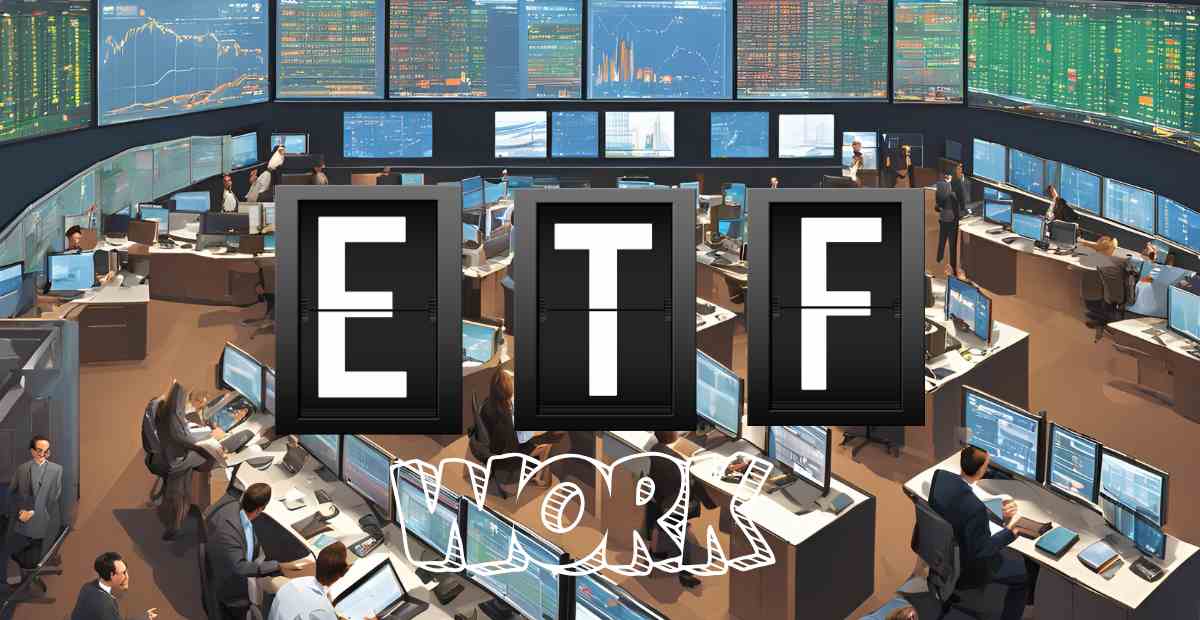A Leveraged Exchange-Traded Fund (ETF) is a financial instrument designed to amplify the returns of an underlying index or benchmark. Unlike traditional ETFs, which track an index on a 1:1 basis, leveraged ETFs use financial derivatives and debt instruments to achieve multiple times the daily return of the benchmark they track. These ETFs commonly aim for 2x or 3x the daily movement of the index, meaning that if the underlying index rises by 1%, a 2x leveraged ETF will aim for a 2% gain.
Leveraged ETFs are widely used by traders and investors who seek short-term gains by taking advantage of market volatility. However, due to their structure, these funds are not suitable for long-term investment strategies due to compounding effects, time decay, and the risk of amplified losses.
How Do Leveraged ETFs Work?
Leveraged ETFs rely on financial derivatives such as futures contracts, options, and swaps, as well as borrowed funds, to amplify returns. The key characteristics of leveraged ETFs include:
-
Daily Rebalancing
Unlike traditional ETFs, leveraged ETFs reset their exposure daily to maintain their targeted leverage ratio. This means that the performance of a leveraged ETF over a longer period may differ significantly from its intended multiple of the index return.
For example, if an index gains 10% in a week, a 2x leveraged ETF might not necessarily return 20% over that period due to compounding effects.
-
Use of Derivatives
Leveraged ETFs primarily use:
- Futures contracts – Agreements to buy or sell an asset at a future date at a predetermined price.
- Swaps – Contracts between two parties to exchange cash flows.
- Options – Contracts granting the right to buy or sell an asset at a specific price before expiration.
These instruments help leveraged ETFs achieve their magnified returns but also introduce additional risks, including counterparty risk and liquidity risk.
-
Amplified Gains and Losses
Because leveraged ETFs are designed to provide multiple times the return of the underlying index, they magnify both gains and losses. If the market moves in an investor’s favour, returns can be substantial. However, if the market moves against expectations, losses can be equally significant.
For example:
- If the S&P 500 gains 1% in a day, a 3x leveraged S&P 500 ETF aims for a 3% gain.
- Conversely, if the S&P 500 drops by 1%, the ETF will lose 3%.
Types of Leveraged ETFs
-
Bull (Long) Leveraged ETFs
Bull leveraged ETFs aim to increase in value when the underlying index rises. These ETFs are labeled as 2x or 3x long ETFs, meaning they seek to deliver two or three times the daily performance of the benchmark index.
Examples of Bull Leveraged ETFs:
- ProShares Ultra S&P 500 (SSO) – 2x leveraged ETF tracking the S&P 500.
- Direxion Daily S&P 500 Bull 3x Shares (SPXL) – 3x leveraged ETF tracking the S&P 500.
-
Bear (Inverse) Leveraged ETFs
Bear leveraged ETFs are designed to increase in value when the underlying index declines. These ETFs are also available in 2x or 3x leveraged versions and are used by traders looking to profit from market downturns.
Examples of Bear Leveraged ETFs:
- ProShares UltraShort S&P 500 (SDS) – 2x inverse ETF tracking the S&P 500.
- Direxion Daily S&P 500 Bear 3x Shares (SPXS) – 3x inverse ETF tracking the S&P 500.
Advantages of Leveraged ETFs
- Potential for Higher Returns – These funds allow traders to capitalize on short-term market movements with enhanced returns.
- Accessibility – Leveraged ETFs provide retail investors access to advanced trading strategies without the need to trade derivatives directly.
- Liquidity – As publicly traded instruments, leveraged ETFs offer greater liquidity compared to other leveraged trading vehicles like margin trading.
- Hedging Opportunities – Inverse leveraged ETFs can be used as an effective hedge against market downturns.
Risks and Challenges of Leveraged ETFs
-
Compounding Effects
Since leveraged ETFs rebalance daily, their long-term performance can diverge significantly from expectations. Volatility decay can cause losses even if the underlying index remains flat over time.
-
Increased Volatility Risk
Due to leverage, these ETFs are more sensitive to market fluctuations, increasing potential losses during high volatility periods.
-
High Expense Ratios
The use of derivatives and frequent rebalancing leads to higher fees compared to traditional ETFs. Investors should review expense ratios, as costs can eat into returns over time.
-
Not Suitable for Long-Term Investors
While traditional ETFs are great for passive, long-term investing, leveraged ETFs are designed for short-term trades and can be risky for buy-and-hold strategies.
Who Should Invest in Leveraged ETFs?
Leveraged ETFs are best suited for:
- Experienced traders who understand market movements and risk management.
- Short-term investors looking to capitalize on market trends.
- Hedgers who want to protect their portfolio from market downturns using inverse leveraged ETFs.
They are not recommended for conservative investors or those with a long-term investment horizon due to the risks associated with compounding, high volatility, and rebalancing decay.
Conclusion
Leveraged ETFs are powerful trading tools that allow investors to amplify their exposure to market movements. However, they come with inherent risks such as increased volatility, compounding effects, and high costs. Understanding how they work and their suitability for different investment strategies is crucial before incorporating them into a portfolio.
For active traders and risk-tolerant investors, leveraged ETFs can offer significant profit opportunities. However, they should be used cautiously and with proper risk management techniques to avoid excessive losses.

A writer, editor, and publisher with a knack for crafting informative articles.

